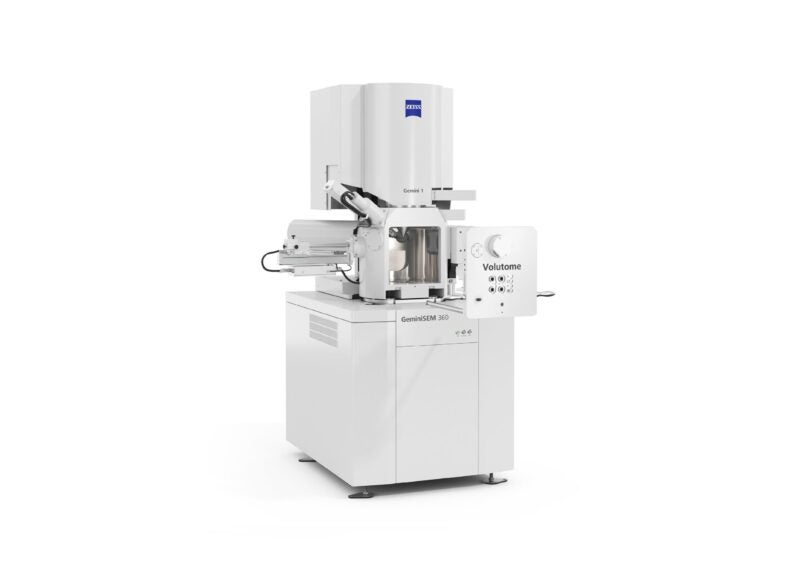
German technology company ZEISS has launched its new integrated system, dubbed ZEISS Volutome, for serial block-face imaging.
ZEISS Volutome is said to be an in-chamber ultramicrotome for ZEISS field emission scanning electron microscopes (FE-SEM).
The firm has designed the imaging system to image the ultrastructure of biological, resin-embedded samples in 3D in life sciences.
It provides an end-to-end solution for serial block-face imaging from hardware to software, including image processing, segmentation, and visualisation.
The technology company said the ultramicrotome can be exchanged by a traditional scanning electron microscopy (SEM) stage, transforming the 3D FE-SEM into a standard FE-SEM and making the system suitable for a multi-purpose setting.
According to ZEISS, the system enables highly automated and unattended cutting and imaging of biological structures with high resolution in large volumes that can last for days.
During image acquisition, ZEISS Volutome pre-calculates the images simultaneously for stitching and z-stack alignment. The results are delivered at the user’s fingertips in one click.
It comes with a high-speed, high-sensitivity detector, ZEISS Volume BSD, which is designed for serial block-face imaging. The detector allows high-contrast images at low acceleration voltages.
The combination of ZEISS Volume BSD with the ZEISS patented Focal Charge Compensation help to easily image the charge-prone samples without compromises by charge neutralisation at the block face.
Apart from that, the system has a built-in ZEISS Volutome stage that eases the acquisition of large-volume EM datasets, the firm added.
ZEISS said that the ZEISS Volutome can help in serial block-face imaging to study cellular structures in any biological sample that has been prepared for electron microscopy.
The system is based on the basic research technology of the Max-Planck Institute for Neurobiology in Martinsried, Germany.






